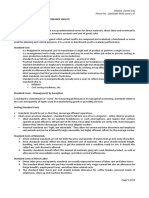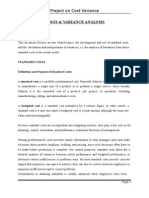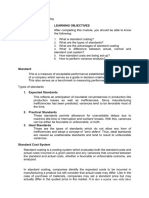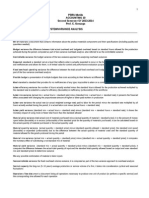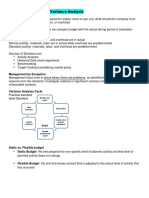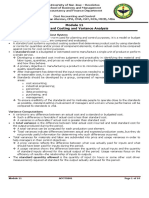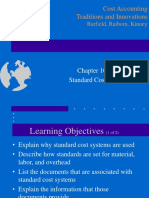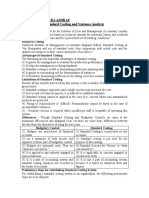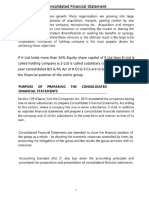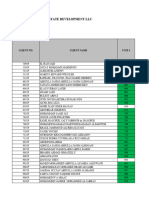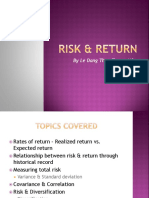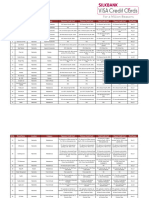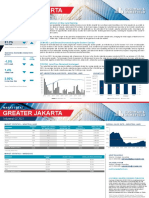0% found this document useful (0 votes)
26 views3 pagesLazy Notes - C7
The document outlines the concepts of standard costs and variance analysis in managerial accounting, emphasizing the importance of standards as benchmarks for performance measurement. It distinguishes between standard costs and budgets, highlights the advantages of using standard costs, and explains the standard costing control loop. Additionally, it details the components of standard costs, various types of variances, and how managers utilize variance analysis for performance evaluation and decision-making.
Uploaded by
kathleenmayalbinoCopyright
© © All Rights Reserved
We take content rights seriously. If you suspect this is your content, claim it here.
Available Formats
Download as DOCX, PDF, TXT or read online on Scribd
0% found this document useful (0 votes)
26 views3 pagesLazy Notes - C7
The document outlines the concepts of standard costs and variance analysis in managerial accounting, emphasizing the importance of standards as benchmarks for performance measurement. It distinguishes between standard costs and budgets, highlights the advantages of using standard costs, and explains the standard costing control loop. Additionally, it details the components of standard costs, various types of variances, and how managers utilize variance analysis for performance evaluation and decision-making.
Uploaded by
kathleenmayalbinoCopyright
© © All Rights Reserved
We take content rights seriously. If you suspect this is your content, claim it here.
Available Formats
Download as DOCX, PDF, TXT or read online on Scribd
/ 3

















